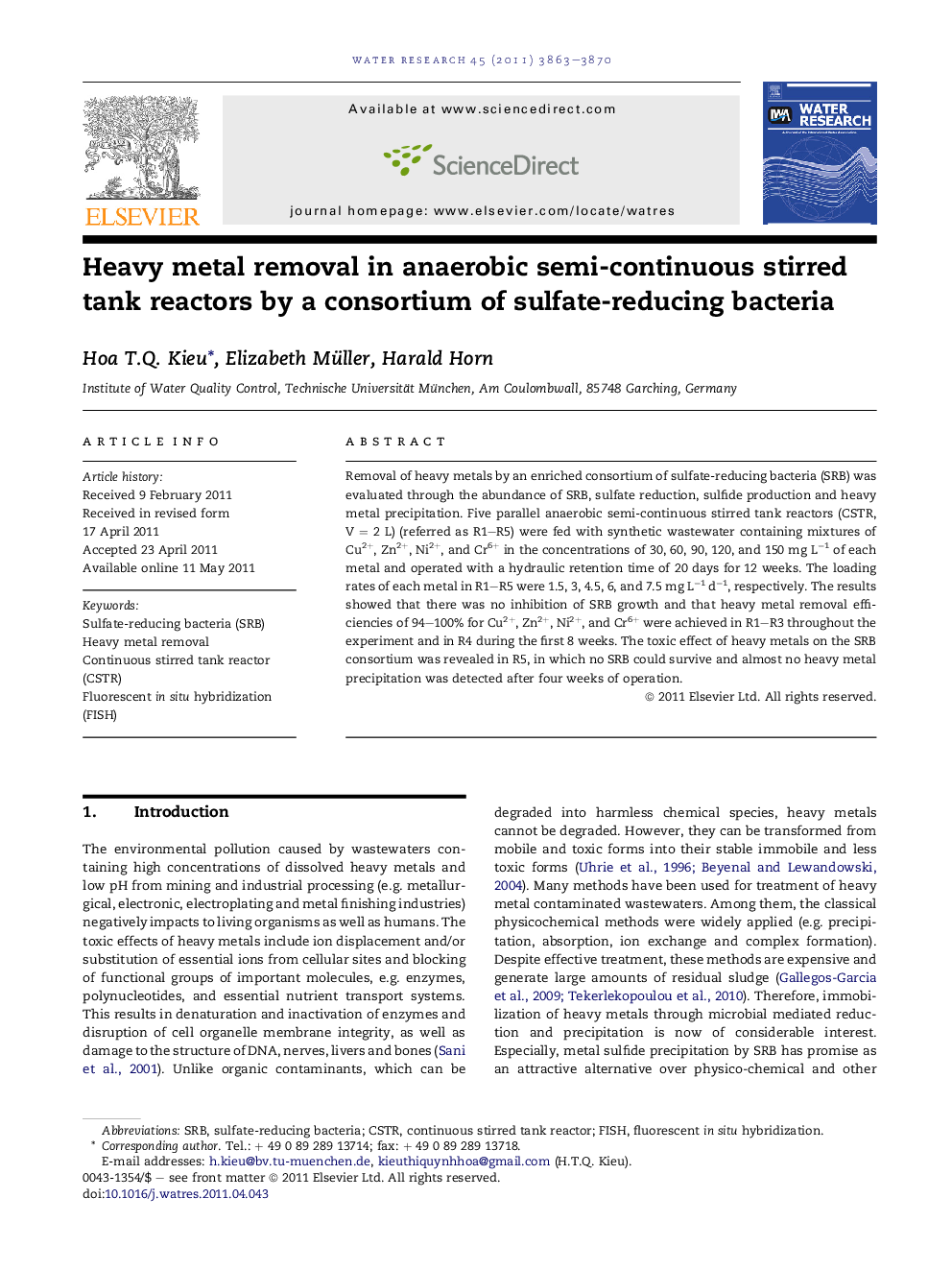| Article ID | Journal | Published Year | Pages | File Type |
|---|---|---|---|---|
| 4484085 | Water Research | 2011 | 8 Pages |
Removal of heavy metals by an enriched consortium of sulfate-reducing bacteria (SRB) was evaluated through the abundance of SRB, sulfate reduction, sulfide production and heavy metal precipitation. Five parallel anaerobic semi-continuous stirred tank reactors (CSTR, V = 2 L) (referred as R1–R5) were fed with synthetic wastewater containing mixtures of Cu2+, Zn2+, Ni2+, and Cr6+ in the concentrations of 30, 60, 90, 120, and 150 mg L−1 of each metal and operated with a hydraulic retention time of 20 days for 12 weeks. The loading rates of each metal in R1–R5 were 1.5, 3, 4.5, 6, and 7.5 mg L−1 d−1, respectively. The results showed that there was no inhibition of SRB growth and that heavy metal removal efficiencies of 94–100% for Cu2+, Zn2+, Ni2+, and Cr6+ were achieved in R1–R3 throughout the experiment and in R4 during the first 8 weeks. The toxic effect of heavy metals on the SRB consortium was revealed in R5, in which no SRB could survive and almost no heavy metal precipitation was detected after four weeks of operation.
► Removal of heavy metal mixtures by a consortium of sulfate-reducing bacteria (SRB) was investigated. ► Heavy metals were removed effectively at the loading rate of 4.5 mg L−1 d−1 of each metal. ► There was no inhibition of SRB growth observed at this loading rate. ► The investigated SRB consortium might have potential application for heavy metal removal.
